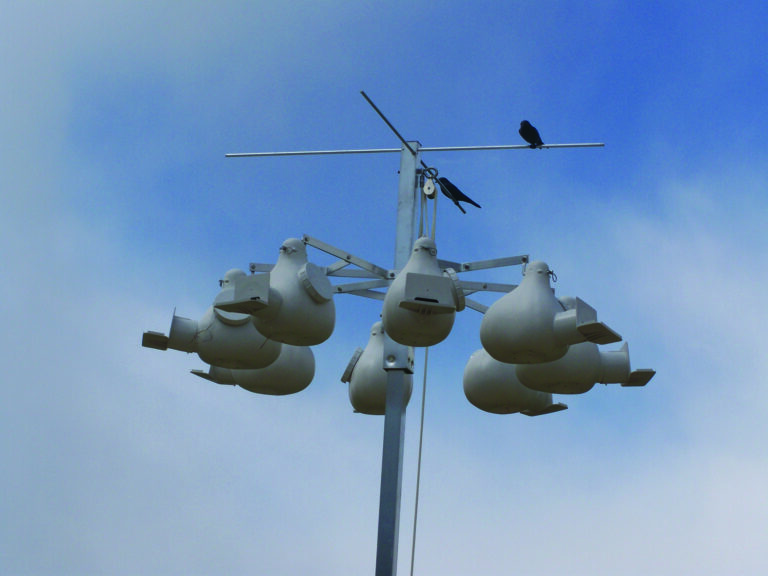
By Dan Tortorice
Friends of Lake View Hill Park
It’s not easy being purple when it comes to being a purple martin.
Think about the difficulty of making it from Madison to Peru or Brazil under your own power twice a year. Things got a lot harder for them when humans brought in sparrows and starlings to compete for nesting spots. Those invasive birds caused a big drop in martin populations.
But humans have been helpful to the beneficial martins as well. Native Americans put bird houses made from gourds mounted on poles to keep them around. They noticed how these energetic feeders were consuming insects and protecting their crops. Most purple martins in the eastern United States now live in houses put up by people who appreciate them.
The Friends of Lake View Hill Park recently mounted purple martin houses on a pole on the sunny hill leading down to Northport Drive. It’s located just below the new split-wood fence behind the veranda of the Dormitory for Help. The houses are shaped like gourds as a tribute to those Native Americans, who have lived in this beautiful part of the world since many centuries ago. They are constructed of modern plastic materials to resist the weather and provide better shelter. The houses can be lowered on the pole to provide easy access and to remove unwanted species who may take them over. If you visit the area, notice the decoy martins mounted on the perch above the houses. They are there to attract martin scout birds into joining them.
Each year, older birds will return from migration first and return to a regular nesting spot or perhaps create a new colony if a spot looks really good to them. They look for an open area near to a pond with plenty of insects hovering about. This sounds a lot like our spot in Lake View Hill Park.
Martins are not actually purple. They are the largest of our local swallows and are black with a blueish tint. They hatch a single brood of four to six eggs per season. Young birds take flight a month or so later and are cared for by their parents for another month. They feed at higher altitudes than other swallows and tend to consume larger insects than the mosquitoes they are commonly known for eating.
Purple martins are social birds that often create colonies of several families. Here’s hoping we will get a big group of them in the park.